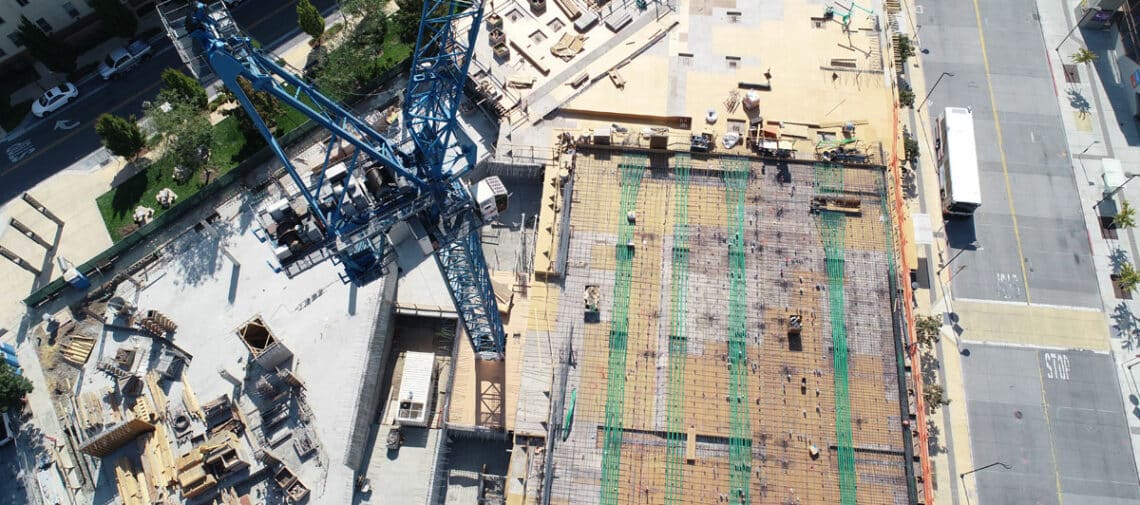Implementing construction software can be challenging and requires employee buy-in. Without it, you’ll end up with a shiny new software solution—that everyone finds ways to work around. That’s why using change management principles during software implementation is so important. Change management helps you focus on People, Processes and Technology (PPT) rather than hyperfocusing on the software alone. This makes it much more likely that the people in your organization will embrace the new construction management software and the workflow changes it brings. In this article, we’ll focus heavily on the “People” part of change management. We’ll give you straightforward tips to help your teams get comfortable with new construction management software. So your company can successfully adopt it and scale to meet the ever-increasing data and scalability demands of modern construction projects. | |
Start earning buy-in during the software selection processLaying the groundwork for successful software adoption starts during the software selection process. During the software selection phase, involve end-users and other important stakeholders in the decision-making process. Not only will you gain valuable insights into the pain points in your current workflows, but you’ll also begin to build a community around the upcoming change. Involving stakeholders at this stage also helps manage expectations. As end-users help compare software solutions, they’ll begin to see what technologies can and can’t do. Moreover, they’ll be able to inform the organization on how long the construction software implementation process will take. This helps prevent unrealistic expectations that lead to disappointment and frustration and allows for a smoother transition for users. Involving those who are affected by the change will create trust, build buy-in from the get-go and accelerate adoption. According to Gartner, involving employees in the selection and implementation process can speed up change by 33%. Communicate well and oftenDevelop a communication plan. Clear and transparent communication is the cornerstone of building company-wide buy-in and helping stakeholders prepare for change. Here are a few avenues you can use to communicate with stakeholders about the change:
In your communications, explain why you’re implementing the construction software. Emphasize its benefits to them personally and explain how it aligns with the company’s overarching goals and vision. Employees need to understand not only what the new software does but also why it’s being implemented and how it’ll impact their work. Ask questions to encourage feedbackTrue communication is a two-way street. So, when discussing the change, don’t just tell people about the change. Ask questions to encourage feedback and help employees take ownership of it. Ask questions like these to help them think deeply about the change and how it’ll impact them:
These questions encourage people to actively pursue information about the change rather than feeling bombarded by it. They can feel like they’re fully part of the onboarding process, as opposed to feeling out of control and automatically building up resistance to the change. Address resistanceFear is a natural response to change. People often fear change at work because they worry they won’t be able to perform as well in a new environment. Instead of stopping employees from sharing their worries, encourage them to talk about them. This way, they can acknowledge their feelings and start thinking more logically about the situation. Internal champions play a critical role in addressing resistance during construction software implementation. They’re part of the group most closely affected by the change, which gives them greater credibility and influence. They can empathize with apprehensions better, making them more effective in overcoming resistance. Additionally, they can provide proactive support and coaching as your organization rolls out new software, enabling a smoother onboarding flow. By ensuring employees’ feelings and experiences are validated, you can help alleviate resistance and create a more supportive environment for adopting the new software. So, listen to concerns, address misconceptions and provide training and support. Provide comprehensive training and support throughout the software implementationLearning how to use new software can be intimidating for employees, especially if they’re accustomed to older systems—or pen and paper. To ensure that employees have the knowledge and skills they need to use the new software effectively, take advantage of your software vendor’s training programs. The best technology vendors understand that your construction teams can’t put their projects on hold just to learn new software. They’ll help you strike a balance between efficiently learning new software and maintaining your construction project timelines. Ongoing support is key during the transition phase and beyond to help employees navigate the new systems with confidence. Make sure to put check-ins in place for your team once onboarding has been completed. Leverage online resources and webinars provided by the vendor to continuously upskill your team. Rely on your internal champions to stay on top of product updates and changes that may impact your team. RedTeam offers construction management solutions with superior supportTrusted by over 850,000 construction professionals, our construction management solutions are designed by experienced contractors, for contractors. Our solutions were created to help you tackle the everyday challenges of construction, from preconstruction to closeout. We provide extensive training and support during onboarding and beyond to ensure you get the maximum benefit from your investment. You and your team can get help through dedicated CSMs, live chat and phone support, training webinars with our dedicated specialists and virtual office hours. To learn more about RedTeam’s solutions today, watch a free demo. |
Frequently Asked Questions
Q: Why is involving stakeholders important during the software selection process?
Involving stakeholders during the software selection process ensures that their insights and pain points are considered, fostering a sense of ownership and community around the change. This helps in managing expectations and prevents unrealistic goals, leading to a smoother transition.
Q: How can clear communication aid in the implementation of construction software?
Clear and transparent communication is vital for building company-wide buy-in and preparing stakeholders for change. Utilizing group workshops, surveys, focus groups and live Q&As can help explain the benefits of the new software and how it aligns with the company’s goals.
Q: What are some effective ways to encourage feedback during construction software implementation?
Encouraging feedback can be achieved by asking questions that prompt employees to consider how the new software will impact their work, the skills they need to learn and how it will affect their peers. This makes them feel part of the onboarding process and reduces resistance to change.
Q: How can resistance to new construction software be addressed?
Resistance can be addressed by acknowledging employees’ fears and encouraging them to share their worries. Internal technology advocates, who are respected by their peers and understand their concerns, can provide support and coaching, making the transition smoother.
Q: Why is comprehensive training essential during construction software implementation?
Comprehensive training ensures that employees have the knowledge and skills to use the new software effectively. Leveraging the software vendor’s training programs and ongoing support helps employees navigate new systems confidently without disrupting project timelines.
Q: What role do internal champions play in software implementation?
Internal champions are crucial as they have greater credibility and influence among their peers. They can empathize with apprehensions and provide proactive support, coaching and staying updated on product changes, facilitating a smoother onboarding process.
Q: How can a company maintain productivity during the transition to new construction software?
Balancing training and project timelines is key. The best technology vendors offer training programs that allow efficient learning without halting ongoing projects. Continuous support and regular check-ins ensure that employees remain productive during and after the transition.
Q: What are some benefits of using RedTeam’s construction management solutions?
RedTeam offers construction management solutions designed by experienced general contractors to tackle daily construction challenges. They provide extensive training and support during onboarding and beyond. This helps teams get the maximum benefit from their investment through dedicated customer success managers, live chat, phone support and training webinars.
Q: How can ongoing support improve the adoption of new construction software?
Ongoing support helps employees adjust to the new software by providing continuous resources and assistance. Regular check-ins and leveraging online resources or webinars ensure employees stay updated and confident in using the new systems.
Q: What should be included in a communication plan for construction software implementation?
A communication plan should include clear explanations of why the software is being implemented, its benefits and its alignment with company goals. It should utilize various communication avenues like group workshops, surveys and live Q&As to keep stakeholders informed and engaged.




